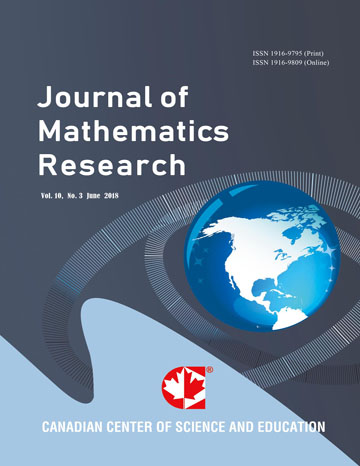A Deeper Analysis on a Generalization of Fermat´s Last Theorem
- Leandro Di Gregorio
Abstract
In 1997, the following conjecture was considered by Mauldin as a generalization of Fermat's Last Theorem: “for X, Y, Z, n$_1$, n$_2$ and n$_3$ positive integers with n$_1$, n$_2$, n$_3$> 2, if $X^{n$_1$} + Y^{n$_2$}= Z^{n$_3$}$ then X, Y, Z must have a common prime factor”. The present work provides an investigation focusing in various aspects of this conjecture, exploring the problem´s specificities with graphic resources and offering a complementary approach to the arguments presented in our previous paper. In fact, we recently discovered the general form of the counterexamples of this conjecture, what is explored in detail in this article. We also analyzed the domain in which the conjecture is valid, defined the situations in which it could fail and previewed some characteristics of its exceptions, in an analytical way.
- Full Text:
 PDF
PDF
- DOI:10.5539/jmr.v10n2p1
Index
- ACNP
- Aerospace Database
- BASE (Bielefeld Academic Search Engine)
- Civil Engineering Abstracts
- CNKI Scholar
- DTU Library
- EconPapers
- Elektronische Zeitschriftenbibliothek (EZB)
- EuroPub Database
- Google Scholar
- Harvard Library
- IDEAS
- Infotrieve
- JournalTOCs
- MathGuide
- MathSciNet
- Open policy finder
- RePEc
- ResearchGate
- Scilit
- Technische Informationsbibliothek (TIB)
- The Keepers Registry
- UCR Library
- Universe Digital Library
- WorldCat
Contact
- Sophia WangEditorial Assistant
- jmr@ccsenet.org
